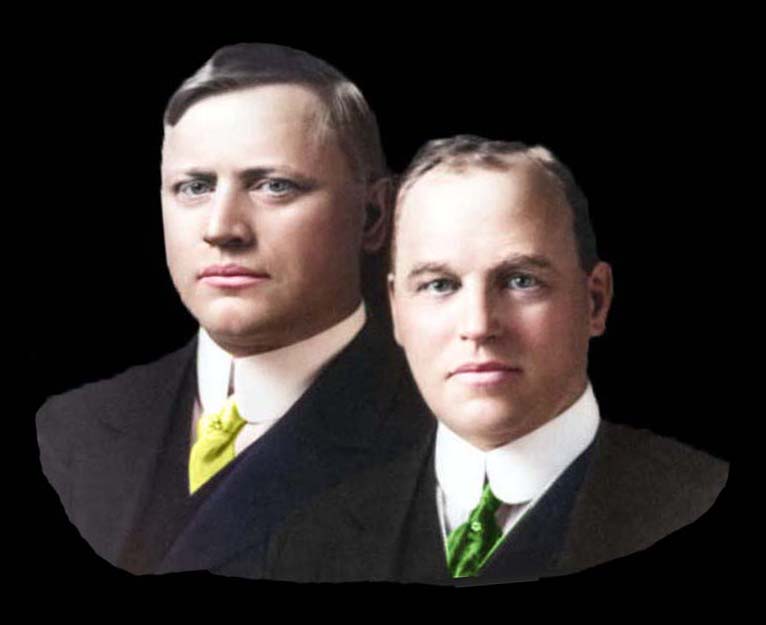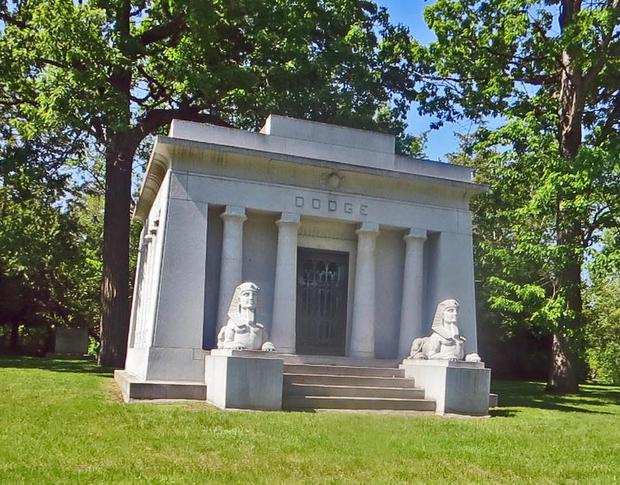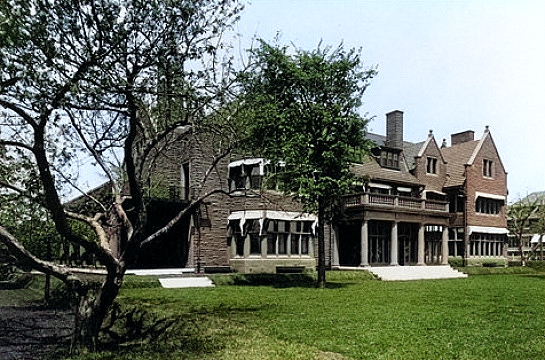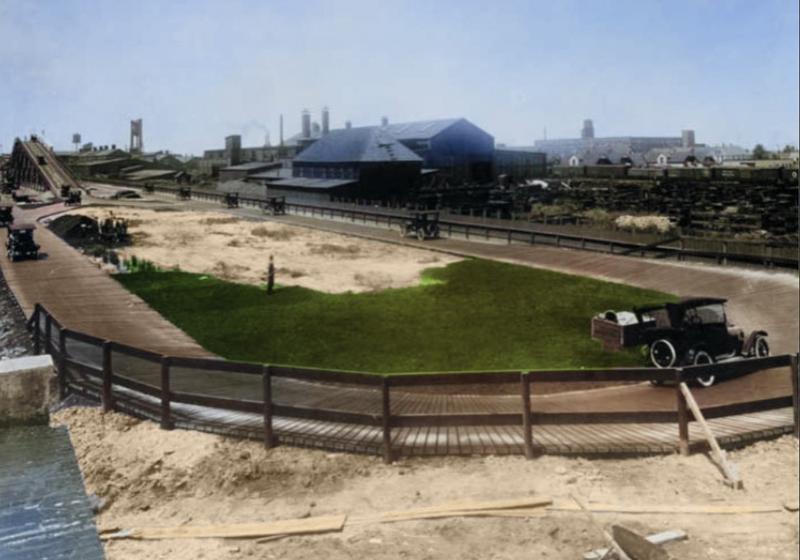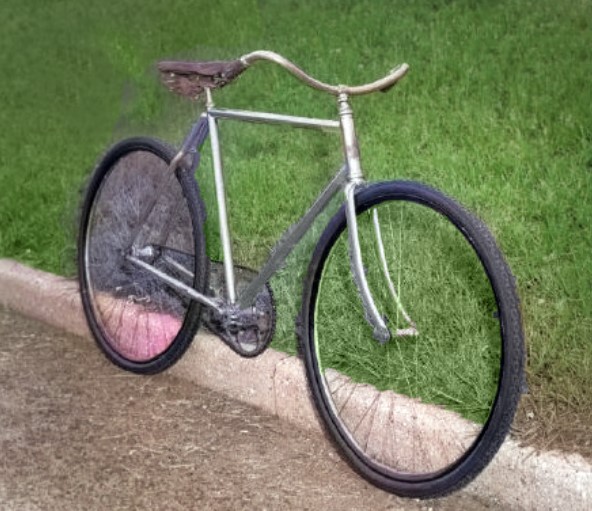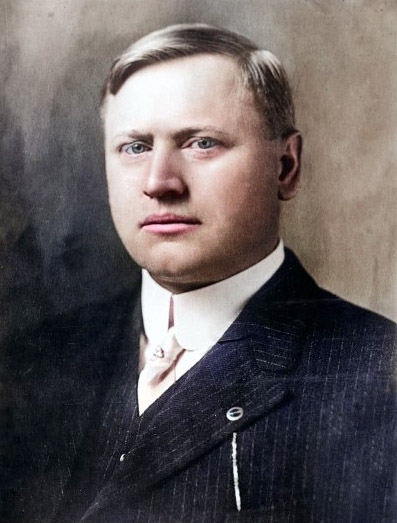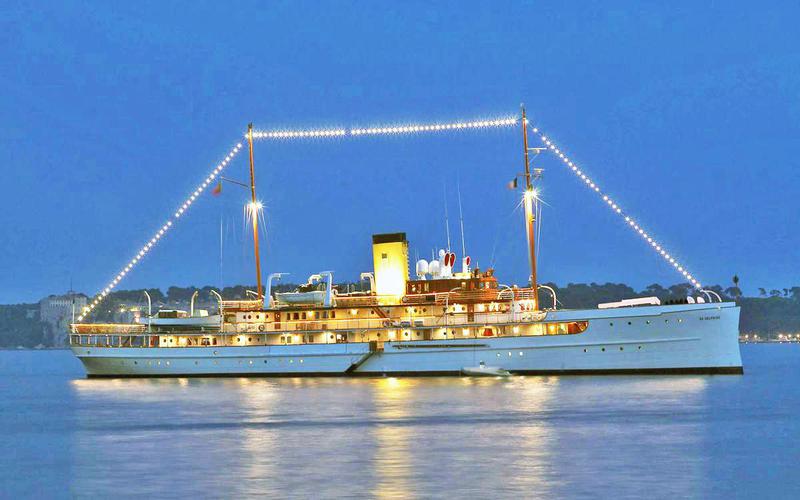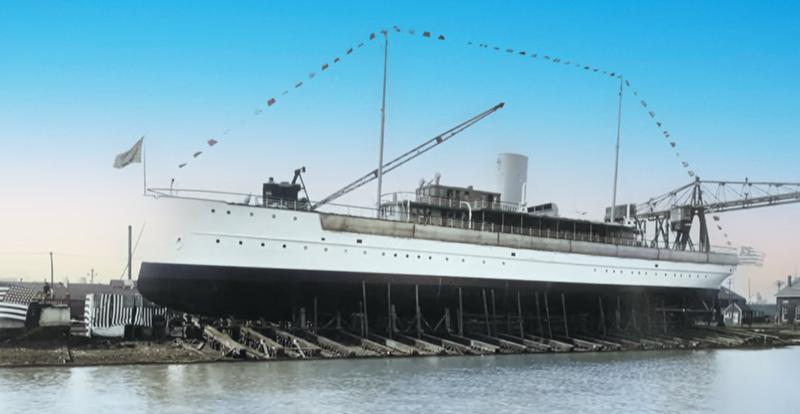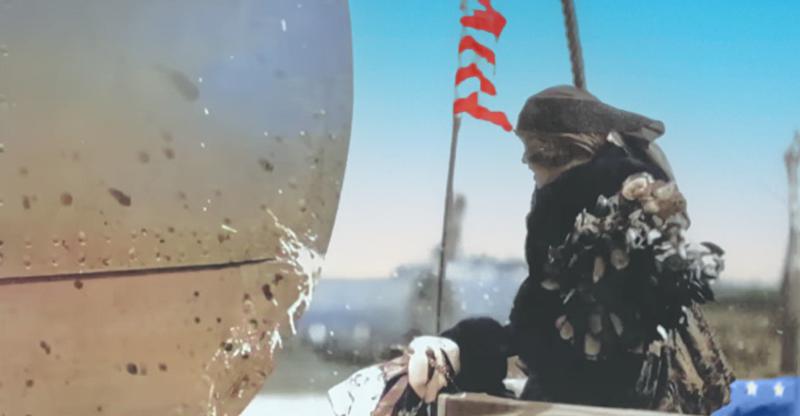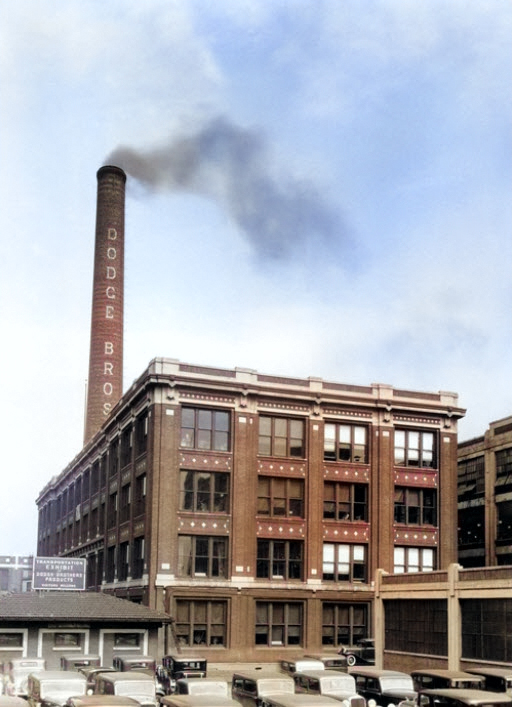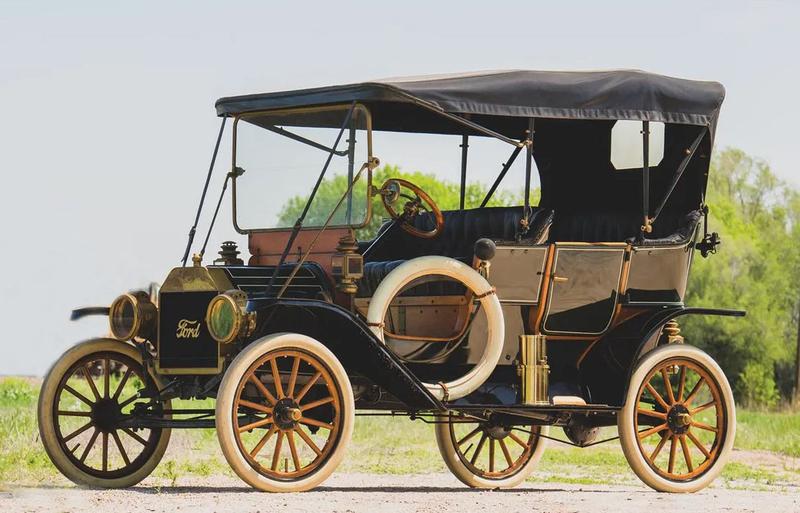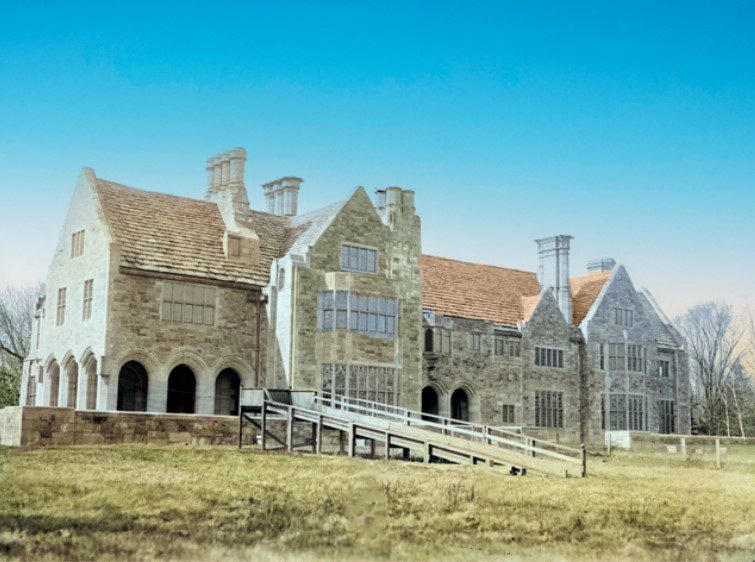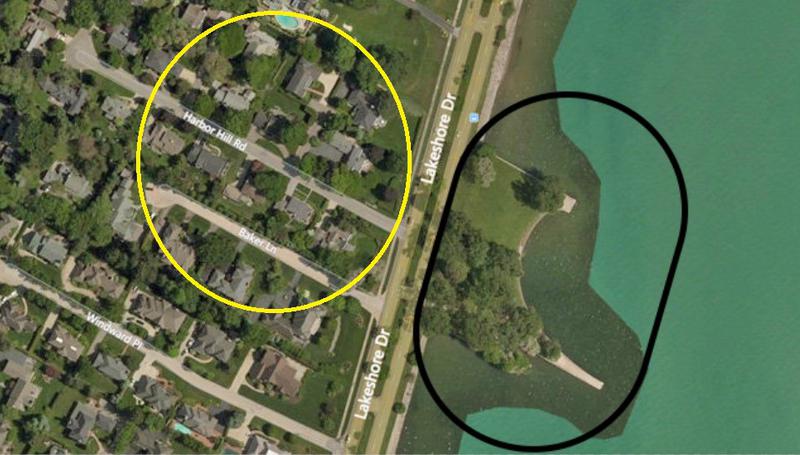Despite the tremendous accomplishments the Dodge brothers packed into their all-too-short lives, perhaps what will always be remembered most about them is that they were indeed brothers, in every sense of the word, as close as two brothers could be. Although not twins, John being the older by four years, they were as inseparable as twins generally are. This was symbolized in their company emblem of interlocking triangles.
Perhaps it was their impoverished upbringing that bonded them together. Too poor to own shoes as kids, they would often walk to school in the winter snow with makeshift rags wrapped around their feet. Maybe it was the humiliating sting that poverty imbues which fueled their unquenchable thirst for success and bolstered their courage against the odds. The Dodge brothers would fight a lifelong battle against a blue- blooded society that refused to admit such ill-bred ruffians within their regal midst, irregardless of their stunning success.
The Dodge Boys were the Peanut Butter and Jelly of the automotive world. Wherever one was the other was sure to be nearby. Once when young John was applying for a job, he informed the manager that if he were to get hired, his brother Horace would also have to be hired, as they were a team. On the rare occasion they were apart, when one went out to buy a suit he would buy a second suit for the brother.
Emblematic of their fraternity in life, the Dodge Boys now rest for eternity in Detroit's Woodlawn Cemetery.
As the old saying goes, “He who laughs last, laughs the best.”
The Dodge boys would indeed enjoy the last laugh and, as per their upbringing, would laugh the loudest.
(Left) A long way from their shoeless boyhood days in Niles Michigan, the chauffeured Dodge Boys show off their first production automobile, nick named "Old Besty," outside John's dazzling mansion in Detroit's elite Boston-Edison subdivision. Now two of the richest men in America and rapidly approaching their zenith, they no doubt felt a Niagara of satisfaction in flaunting their wealth in front of the very society that had for decades consistently snubbed them.
Horace Dodge's fabulous mansion off Jefferson Ave in Grosse Pointe known as Rose Terrace. One of the few cultured traits Horace acquired as a youth was how to play the piano and he learned to play it well.
Now living at Rose Terrace, where he had a massive pipe organ installed, Horace would come home and take his daily frustrations out by playing his organ, filling the elegant estate with flowery tunes as if he were Grosse Pointe's Phantom of the Opera.
How it all started
(Left) - A Penny-Farthing bicycle, very popular in the late 1800s, caught the eye of the teenage Dodge boys who proceeded to fabricate their own bike out of scrap metal from their father's shop. They eventually went into business building their own bicycle.
(Right) - A surviving Dodge brothers' bicycle which provided the impetus for the later day Dodge motor car.
Once again, the Dodge boys were one step ahead of their competitors by being the first to have a test track built outside Dodge Main. All Dodge cars that came off the line had to pass a battery of tests before being shipped out. Since the Detroit area was so flat geographically, a steep hill was fabricated to test drivetrain power going up and the braking system going down.
Big brother John, who by today's standards would have been considered a bit of an ogre, was a highly skilled, hard-nosed businessman who had a knack for futuristic visions which kept the Dodge boys one step ahead of the competition and propelled them through the ever distant door of prosperity.
Horace was a mechanical genius, the Leonardo De Vinci of his day. The years of machine shop inculcation by his father added to his considerable, inborn aptitude. He was in his element at his drafting board, pouring over the latest blue prints and quickly identifying issues that he could readily improve upon.
Horace Elgin Dodge
John Francis Dodge
Sadly, little remains of the automotive industries most legendary and successful brothers. A hard luck fate that seemed to follow them like a shadow their entire life also seems to have swallowed their vibrant history. Outside of their historic nameplate that still adorns millions of theirs cars, much of the Dodge brothers personal identity has tragically vanished.
(Today) Having changed ownership many times and coming precariously close to a one-way trip to the breakers yard, the graceful Delphine survives and continues to display her charm and flair only on a slightly bigger lake. Now plying the Mediterranean Sea, the Delphine now demonstrates to the European crowd the Dodge style, splendor and elegance of a bygone day.
Perhaps the greatest surviving remembrance of Horace Dodge is the yacht he helped design but would not live to see completed. (Above) At the Great Lakes Engineering Works in Ecorse, Horace Dodge's yacht, which he named Delphine after his daughter, prepares to enter the water for the first time and do what ladies are supposed to do, look elegant.
(Left) Delphine Dodge, the only daughter of Horace Elgin Dodge.
(Right) April 2, 1921, Delphine Dodge breaks the champaign bottle over the bow of the Delphine and in honor of her late father, launches his famous yacht into the Detroit River four months after his death.
Dodge Main office buildings where the brothers ran the company. The Dodge brothers had such an inpecable reputation for quality that some 72,000 orders for their automobile were placed even before the first car came off the assembly line. Due to the phenomonal early success of Dodge Motor Co., the complex would double, then triple in size over the decades eventually boasting a whopping 5 million square feet, a fire breathing colossus employing thousands of Detroiters.
Progressing upwards, the Dodge boys were approached by Ransom Olds to produce transmissions for his 1903 curved dash Olds (above, Left)
The Dodge boys reputation for quality and dependability caught the eye of auto magnet Henry Ford who began buying transmissions, axles and engines for his world famous Model T.
After years of pocketing handsome profits from Ford, a family friend challenged the Dodge boys to build their own car since they were already providing the majority of the parts for the Model T. John boasted that they were already making more money than they could spend. He was reminded that the gravy train with Henry could end at any time. John saw the light and in 1910 the boys bought a 24 acre parcel in Hamtramck, bordering Detroit and proceeded to build the massive Dodge Main assembly plant.
1903 Curved Dash Oldsmobile
1910 Ford Model T Touring
Harbor Hill, the palatial estate built by John Dodge on an 11-acre lot at 223 Lake Shore Drive in Grosse Pointe. Although quite picturesque on the outside, it was in fact never completed at the time of John's death in 1920, the now unused builder's ramp stands idly by. The inside, which was to feature 110 rooms/24 baths, was left an empty shell and the ghost like house sat vacant for 20 years until it was demolished in 1940 and the massive lot was divided up into a dozen smaller parcels. (Yellow circle below)
While John Dodge's dreamy mansion is gone, the peninsula he added across from Lake Shore Drive to moor his yacht still remains as a eerie reminder of John Dodge's unfulfilled vision (Below, Black ellipse)
They drank from the same cup
Dodge Boys - End of the Line
 | ||||||
The storied Dodge Main assembly plant, which helped put the world on wheels and made the Dodge brothers famous, meets its humiliating end in 1981. Brain child of the Dodge boys, it once employed 30,000 people during WW2 only to have the axe of inefficiency fall on it as another piece of the Dodge legend slides into the dust bin of history.
The Cup of Success


